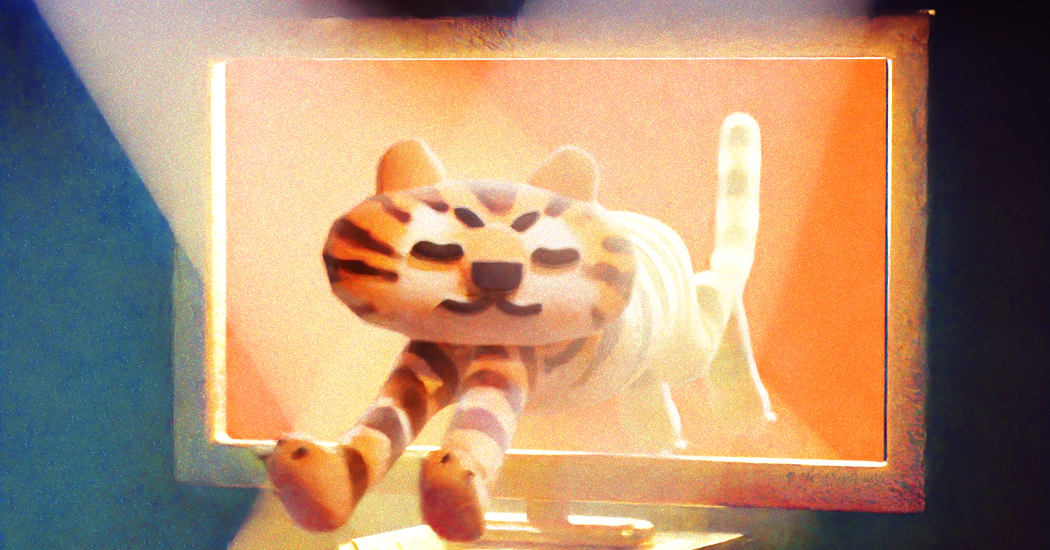

TikTok and Netflix didn’t invent flashes in the pan, of course. But the infinite nature of the internet and online mechanics have supercharged the 15 minutes of fame.
“Some of us and some businesses will learn to accept that fame comes five seconds and not 15 minutes at a time,” Tal Shachar, a media and video game executive, wrote last year.
Nearly each day or week, there is a fresh piece of digital entertainment or an online celebrity mania that comes and goes much faster than fast fashion.
Netflix drives fads for wearing track suits or taking up chess. The Reddit mobs that tried to track down the Boston Marathon bombers in 2013 morphed into regular TikTok vigilante crusades. The viral internet celebrity machine of the 2010s feels musty compared with the rapid minting of online stars like the cranberry juice skateboard guy.
Why is this happening? I’ll mention a couple of possibilities. First, there is just SO MUCH of everything online. The good news is that this makes more room for new trends or personalities, and makes it handy for Netflix or TikTok recommendations to help us figure out what to watch.
The bad news is that it’s hard for any one thing to keep our attention for very long. I might love your Instagram photos but … ooh, look over there! Some other shiny internet object!
Second, flash internet moments are juiced by the recommendation systems of our favorite websites that reward attention with more attention.
People who saw those sorority TikTok videos made other TikTok videos commenting about them, which was a signal to TikTok’s computers to feed more sorority videos into our eye holes. Netflix, YouTube, Spotify, Facebook and many other popular sites operate on similar feedback loops that push more of whatever is being noticed.
It’s hard to imagine slowing down the pace of digital manias, so we might need to adapt ourselves to this reality.
When we listen to a song or feel outraged about something we saw online, it’s worth being mindful about the influence of corporate computer systems that reward and are rewarded by our attention.
And we may need to recalibrate our mind-sets. My colleague Kashmir Hill wrote a compelling essay this year about the belief in the early days of social media that the longer our lives and thoughts were documented online, the less we would judge others by their worst moments. “Instead the opposite has happened,” Kash wrote.
We can still develop the compassion that internet optimists once predicted. Knowing that some new internet drama will emerge in an hour could make us resist being pulled into the endless cycle of come-and-go outrages over an expensive advent calendar or “TikTok Couch Guy.”
Even Netflix seems to have misgivings about relying on the sugar high of fast-churning online trends. A Bloomberg News reporter, Lucas Shaw, wrote a year ago that Netflix had been trying to rely a little less on series and movies that become popular and fade fast.
It turns out that it’s expensive and exhausting to keep producing entertainment that doesn’t endure for long. That feels like a useful lesson for our tired brains, too.
Before we go …
-
Safety versus visions of a self-driving future: Some former Tesla employees say that Elon Musk pushed the company to compromise road safety in his desire for Tesla cars to drive themselves, my colleagues Cade Metz and Neal E. Boudette report. In one example, Musk told Tesla engineers to install a rubber seal over radar at the front of sedans, even though some employees warned that the seal could trap snow and ice and prevent the system from working properly.
Related: Tesla drivers can now play video games from the large in-dashboard touch screen while the car is in motion.
-
The supply chain is people, too: A computer chip factory in Malaysia kept operating during a Covid-19 surge in the country this year. Family members of a worker who died told Bloomberg News that they blamed the company for a Covid death rate for plant workers that appeared to be higher than that in the rest of Malaysia. (A subscription may be required.)
-
Does your cat love bird watching? Or is she bored of you? Megan Reynolds writes in The New York Times Magazine about her cat (and herself) finding delight in hourslong YouTube videos that give indoor kitties a glimpse at birds and outdoor scenes.
Hugs to this
There’s nothing quite like the mascots of Japanese baseball teams. Here is Nazo No Sakana, the mascot of the Chiba Lotte Marines team, doing his famous routine of vomiting out his own skeleton. (Thanks to my colleague Erin McCann for posting this one.)
We want to hear from you. Tell us what you think of this newsletter and what else you’d like us to explore. You can reach us at ontech@nytimes.com.
If you don’t already get this newsletter in your inbox, please sign up here. You can also read past On Tech columns.



